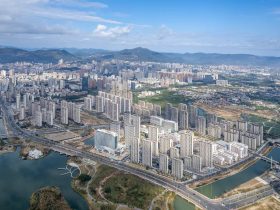The World Bank has upheld its 2023 economic growth projection for China at 5.1%, consistent with its previous estimate in April, but revised down its forecast for 2024 to 4.4% from 4.8% due to the ongoing weakness in China’s property sector. The bank released these figures in its semi-annual regional update on Sunday.
The bank also adjusted its 2023 gross domestic product growth forecast for East Asia and the Pacific, including China, to 5.0% from its prior estimate of 5.1%. For 2024, the outlook was lowered to 4.5% growth from the previous prediction of 4.8%. This downgrade was attributed to external factors such as a sluggish global economy, high interest rates, and trade protectionism. The World Bank noted that nearly 3,000 new restrictions were imposed on global trade in 2022, three times as many as in 2019.
China’s initial economic recovery following three years of stringent zero-COVID policies has faded, and issues such as elevated debt and a weak property sector are impacting growth, according to the World Bank report. However, after several months of mostly disappointing data, signs of stabilization have started to appear in the world’s second-largest economy.
A survey released on Saturday revealed that China’s factory activity expanded for the first time in six months in September. There were initial indications of improvement in August, with factory production and retail sales growth accelerating and declines in exports and imports narrowing. Deflationary pressures also eased during this period. Profits at industrial firms saw an unexpected surge of 17.2% in August, reversing a decline of 6.7% in July.
Analysts have suggested that additional policy support will be necessary to ensure that China’s economy can meet the government’s growth target of approximately 5% this year. The World Bank has also advised stronger structural reforms, including further liberalization of the “hukou” residence permit system, enhanced social safety nets, and increased regulatory predictability for investments in innovative and green products to boost consumption and investment, forming the foundation for sustainable growth.
This article was generated with the support of AI and reviewed by an editor. For more information see our T&C.
Read the full article here











Leave a Reply